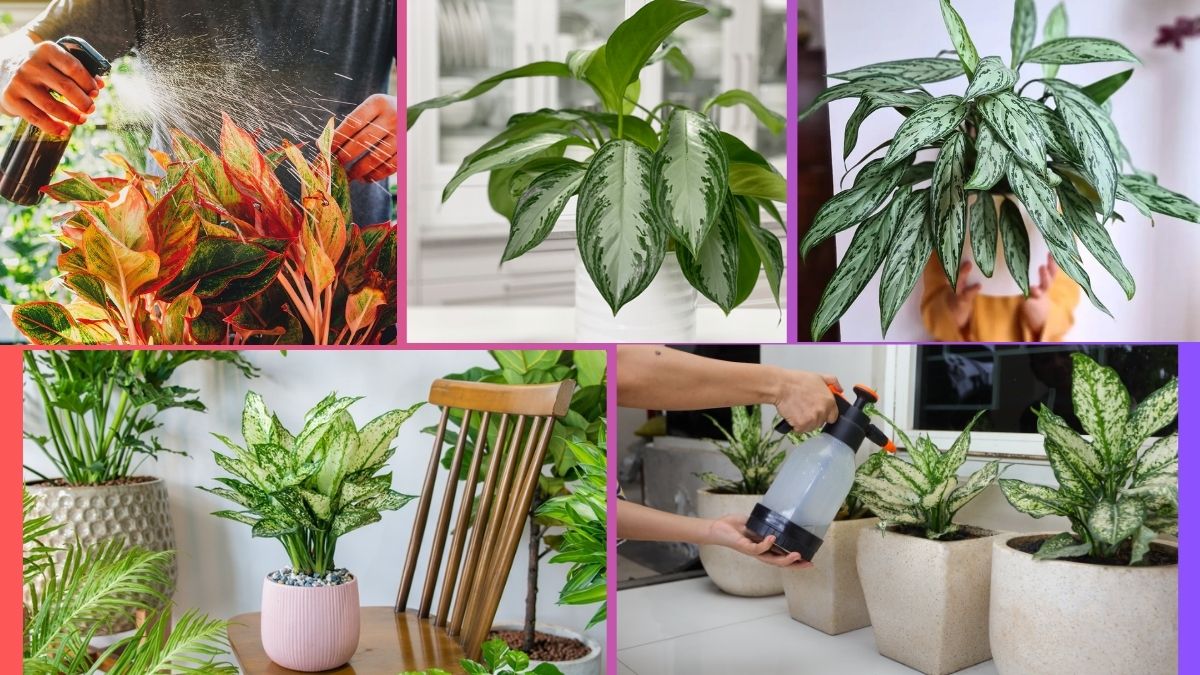The Chinese Evergreen (Aglaonema spp.) is one of the most popular and resilient indoor plants, beloved for its stunning variegated foliage and ability to thrive in a wide range of indoor environments. Native to the tropical and subtropical regions of Asia, this hardy plant is often recommended for beginners because of its adaptability and low-maintenance care requirements.
Among the most important aspects of caring for a Chinese Evergreen is understanding its watering needs. Though forgiving of occasional neglect, improper watering — whether too much or too little — can lead to problems like yellow leaves, root rot, or stunted growth. In this article, we’ll explore in detail how often you should water a Chinese Evergreen, what factors affect its watering needs, signs of overwatering and underwatering, and best practices to keep this beautiful houseplant flourishing.
Understanding the Chinese Evergreen’s Natural Habitat
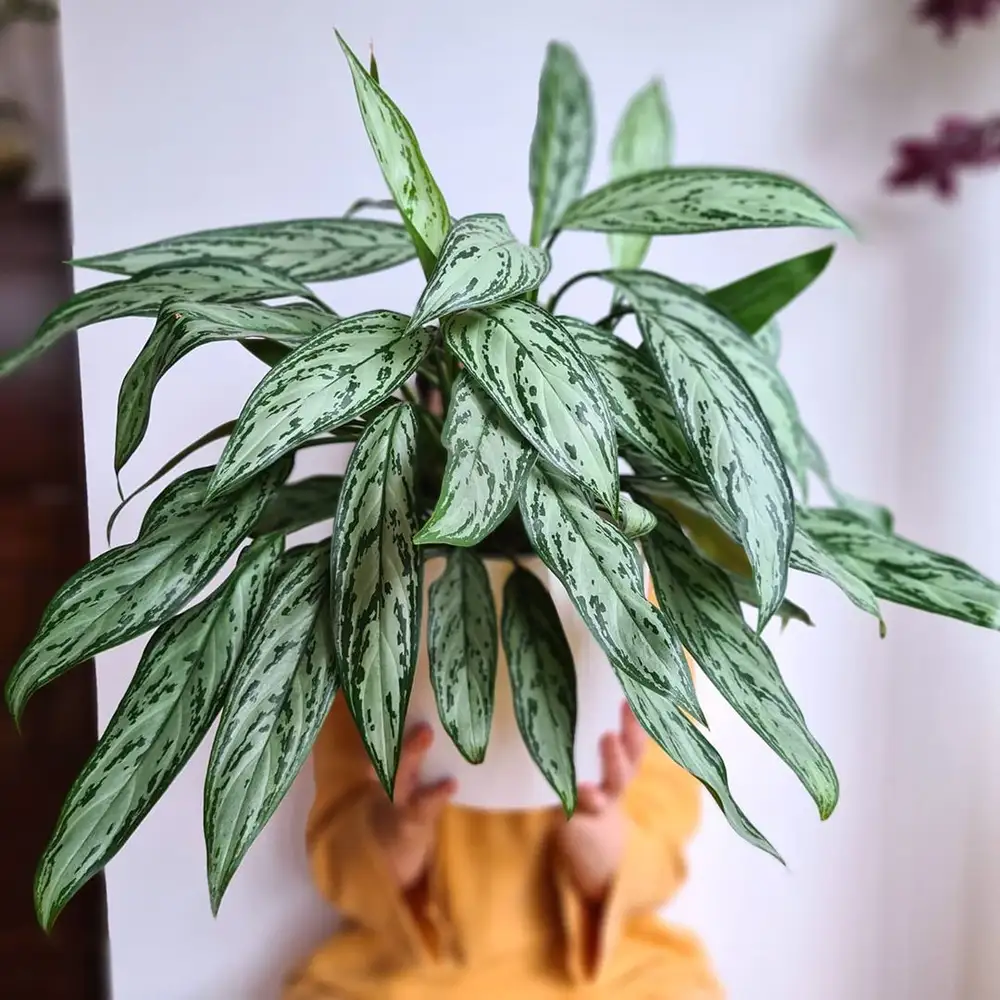
In its native habitat, the Chinese Evergreen grows:
- On forest floors under dense canopies
- In warm, humid, and shaded conditions
- In organically rich, well-draining soils
- With moderate and consistent moisture levels
This natural environment means the plant prefers moist but not soggy soil and can tolerate periods of slight dryness. Mimicking these conditions indoors is the key to successful care.
How Often Should You Water a Chinese Evergreen?
1. General Watering Schedule
A good general guideline is:
- Water once every 7–10 days during the growing season (spring and summer).
- In fall and winter, reduce watering to once every 14–21 days or when the top 1–2 inches of soil feel dry.
However, the exact frequency depends on several environmental factors such as temperature, light, humidity, soil type, and pot size.
Key Rule:
Let the top 1–2 inches of soil dry out between waterings to prevent overwatering.
Chinese Evergreens are more tolerant of underwatering than sitting in soggy soil, making it essential to strike the right balance.
Factors Influencing Chinese Evergreen’s Watering Needs
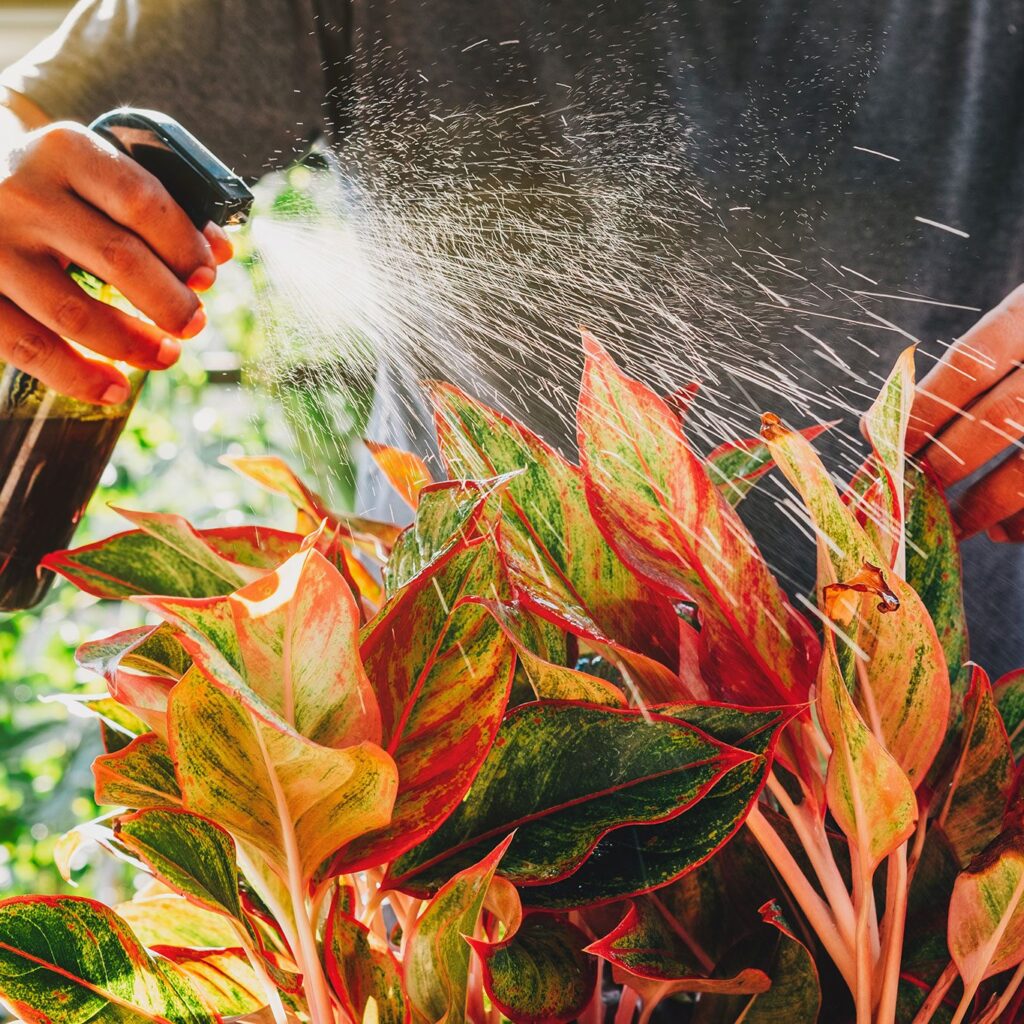
Several factors determine how often you should water your Chinese Evergreen. Understanding these ensures a watering routine tailored to your plant’s environment.
1. Temperature and Season
- High temperatures (above 26°C/79°F) cause quicker evaporation and increase the plant’s water needs.
- Cooler temperatures (below 18°C/64°F) slow down plant growth and reduce water requirements.
Tip: Increase watering during hot, dry weather and reduce in cooler seasons.
2. Humidity
As a tropical plant, Chinese Evergreens thrive in moderate to high humidity (50–60%):
- In low-humidity, indoor environments (heated or air-conditioned spaces), soil dries faster.
- In humid areas, soil retains moisture longer.
Tip: Use a humidifier or place a pebble tray with water under the pot in dry conditions.
3. Light Exposure
- Bright, indirect light boosts growth and increases water requirements.
- Low light areas slow down evaporation and plant activity, reducing water needs.
Tip: Adjust your watering frequency based on the light conditions in your home or office.
4. Soil Type and Drainage
Chinese Evergreens prefer loose, well-draining potting mixes. Ideal mixes include:
- Peat moss or coco coir for moisture retention
- Perlite or coarse sand for aeration and drainage
Tip: Avoid dense, heavy soils that trap water and increase the risk of root rot.
5. Pot Size and Material
- Large pots hold more water and dry out slowly.
- Terracotta pots allow faster evaporation compared to plastic or ceramic.
Tip: Ensure your pot has good drainage holes to prevent water accumulation.
How to Check Soil Moisture Before Watering
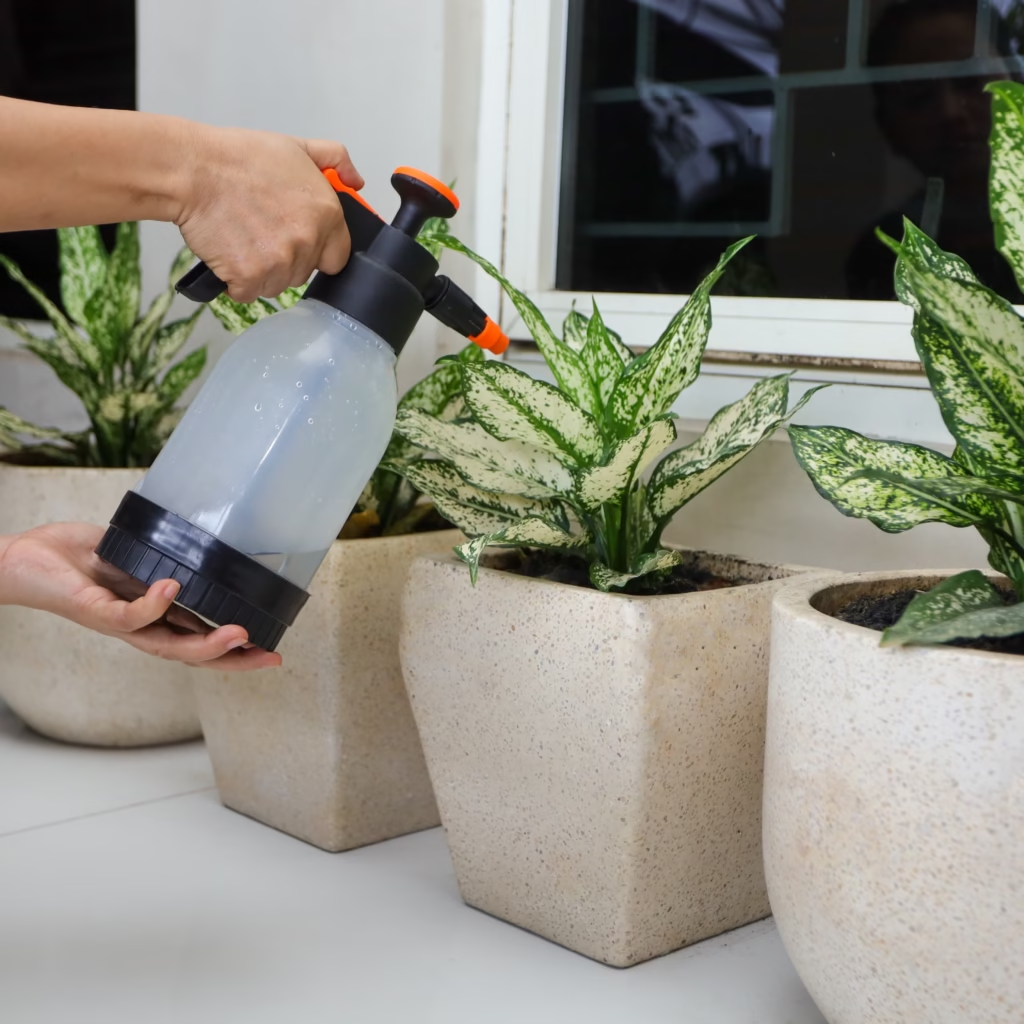
Before watering, always check soil moisture using one of these methods:
1. Finger Test
Insert your finger about 1–2 inches into the soil:
- If the soil feels dry, it’s time to water.
- If it feels moist, wait a few more days.
2. Moisture Meter
For a more accurate reading, use a moisture meter to check soil moisture at the root zone.
3. Visual Cues
- Dry soil appears lighter in color and may pull away from the pot’s edges.
- Moist soil remains darker and feels cool to the touch.
Signs of Overwatering and Underwatering
Recognizing the symptoms of improper watering is vital for maintaining plant health.
1. Signs of Overwatering
- Yellowing, mushy, or limp leaves
- Blackened or soggy roots (root rot)
- Musty or sour-smelling soil
- Fungal growth on the soil surface
Solution:
Remove affected leaves, allow the soil to dry out, and adjust your watering schedule. Repot if necessary in fresh, well-draining soil.
2. Signs of Underwatering
- Brown, crispy leaf edges or tips
- Drooping, wilted leaves
- Dry, compacted soil pulling away from the pot
- Slow or stunted growth
Solution:
Water the plant thoroughly until excess runs out of the drainage holes, and adjust watering frequency.
Best Watering Techniques for Chinese Evergreen
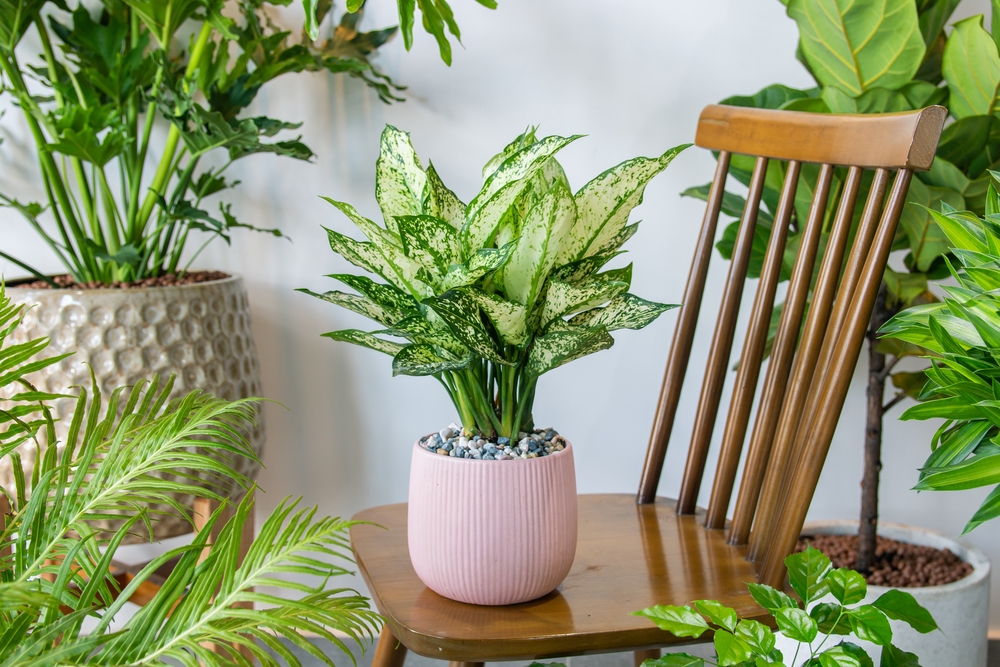
1. Water Deeply and Evenly
When watering, thoroughly saturate the soil until excess water drains from the bottom. This ensures deep root hydration and prevents dry pockets.
2. Use Room-Temperature, Non-Chlorinated Water
Cold or chlorinated water can damage the plant. Use:
- Filtered water
- Rainwater
- Tap water left out overnight to allow chlorine to dissipate
3. Water in the Morning
Watering early in the day allows excess moisture to evaporate, reducing the risk of fungal issues.
Seasonal Watering Guidelines
| Season | Watering Frequency | Additional Tips |
|---|---|---|
| Spring/Summer | Every 7–10 days | Check soil regularly; increase humidity in dry environments |
| Autumn/Winter | Every 14–21 days | Reduce watering significantly; avoid letting soil stay wet for too long |
Common Watering Mistakes to Avoid
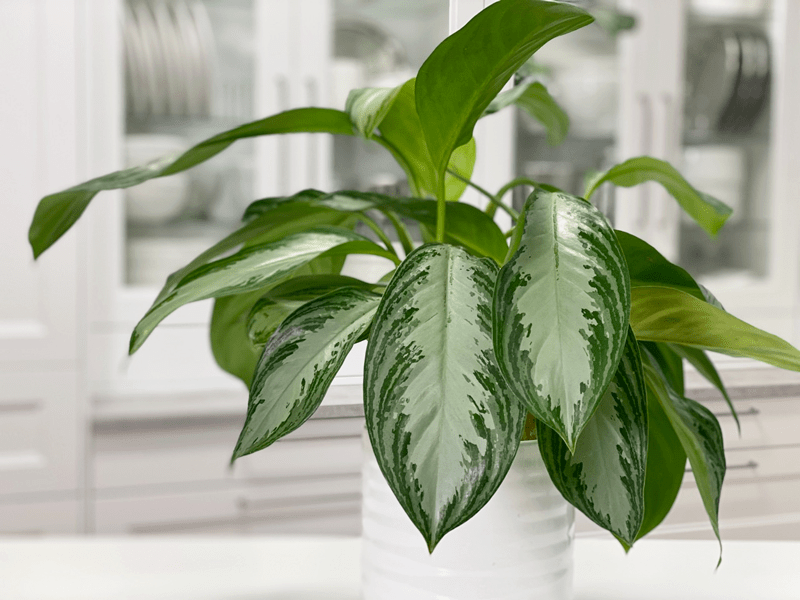
- Overwatering in low light or during cooler months
- Using compact, poorly-draining soil
- Leaving water sitting in the saucer under the pot
- Watering on a strict schedule without checking soil moisture
- Ignoring environmental changes that affect water needs
Extra Care Tips for a Thriving Chinese Evergreen
- Wipe leaves occasionally with a damp cloth to remove dust and promote healthy photosynthesis.
- Fertilize lightly every 4–6 weeks in spring and summer using a balanced, diluted liquid fertilizer.
- Repot every 2–3 years or when the plant outgrows its container to refresh soil and provide room for growth.
- Avoid placing the plant in direct sunlight, which can scorch the leaves.
- Rotate the plant occasionally to encourage balanced growth on all sides.
Conclusion
The Chinese Evergreen is a stunning, versatile, and low-maintenance houseplant that brings color and charm to any indoor setting. Its resilience makes it an excellent choice for novice gardeners and busy plant lovers alike.
As a general rule, water your Chinese Evergreen every 7–10 days during active growth and every 14–21 days during dormancy, adjusting based on temperature, humidity, light conditions, and soil moisture. Always check soil dryness before watering and ensure proper drainage to avoid overwatering.
By following these simple yet essential guidelines and paying attention to your plant’s cues, you can enjoy a vibrant, healthy Chinese Evergreen that will beautify your home or office for many years to come.
